Europe 2022 - Part 2: Lucerne and Zurich
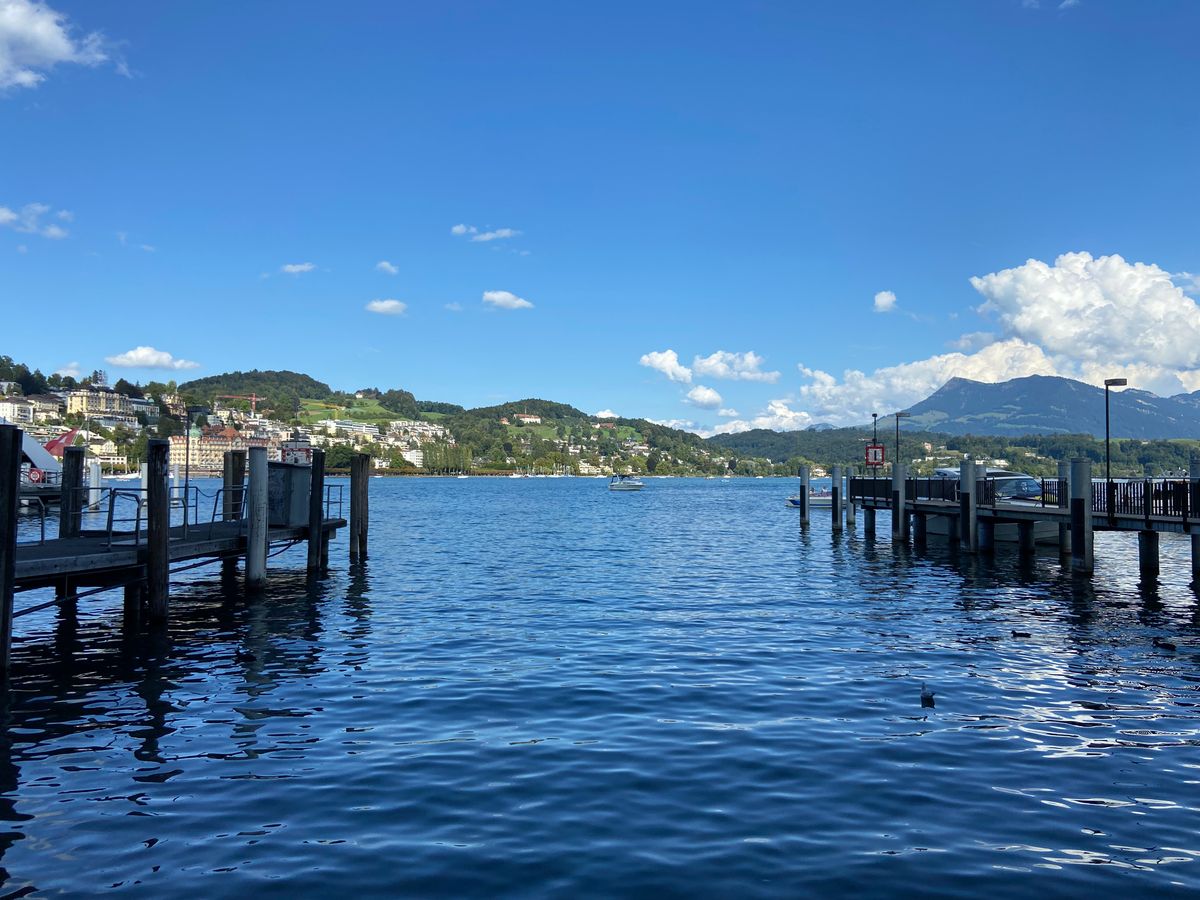
This is the second part of a three-part series on our trip to Germany and Switzerland in September 2022. Part one covered Basel, Interlaken, and the Bernese Oberland.
After one last delicious breakfast at Hotel Interlaken and a bit of souvenir shopping, it was time to head to the train station for our 1:04 train to Zurich via Lucerne. The route from Interlaken to Lucerne is part of the scenic "Golden Pass" route and the scenery along the way was indeed spectacular (although hard to capture photographically through the train window). The segment between the villages of Meiringen and Sarnen was particularly beautiful.
Lucerne
We disembarked in Lucerne to explore the city and have a late lunch. To us, Lucerne seemed to strike the perfect balance between all that a Swiss city has to offer. Set on the shores of a beautiful glacial lake. Big enough but not too big. Close to the mountains, but not in the mountains. Lucerne sits on the northwest shore of Lake Lucerne which is drained by the lovely Reuss which runs through the center of town on its way to join the Aare and eventually the Rhine.
In Lucerne, the Reuss is criss-crossed by a series of charming medieval wooden bridges. The most famous of these is known as Kapellbrücke (Chapel Bridge) which at one point featured over 140 triangular paintings mounted to the bridge's timber framing which depicted the history of Lucerne during the Reformation and Counter-Reformation. Unfortunately a fire in 1993 destroyed a large number of these (along with a large portion of the bridge). The bridge was re-built the following year and about 40 paintings remain. You can still see the evidence of the fire on blackened timbers at certain points along the bridge. (See below center.)
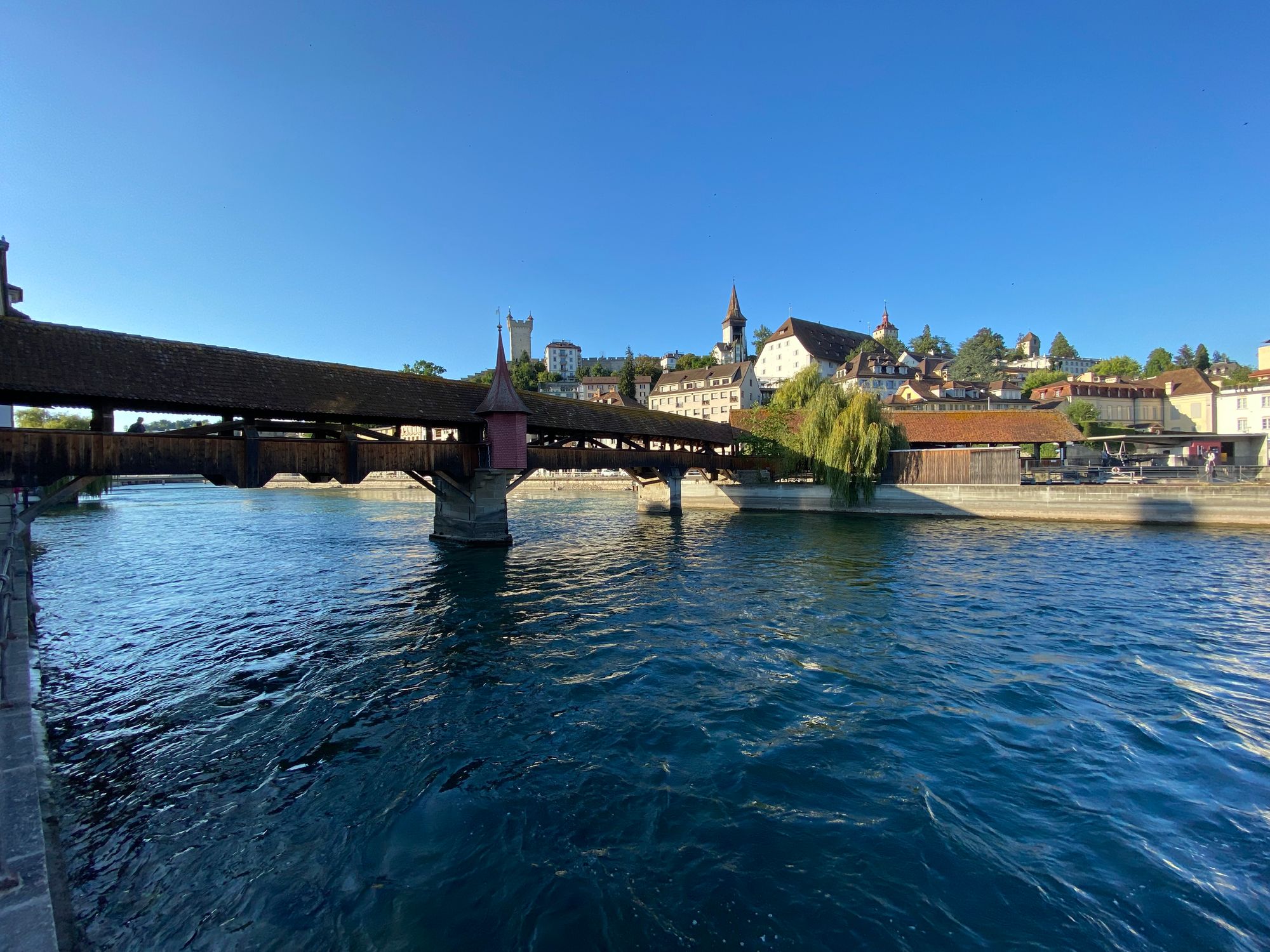

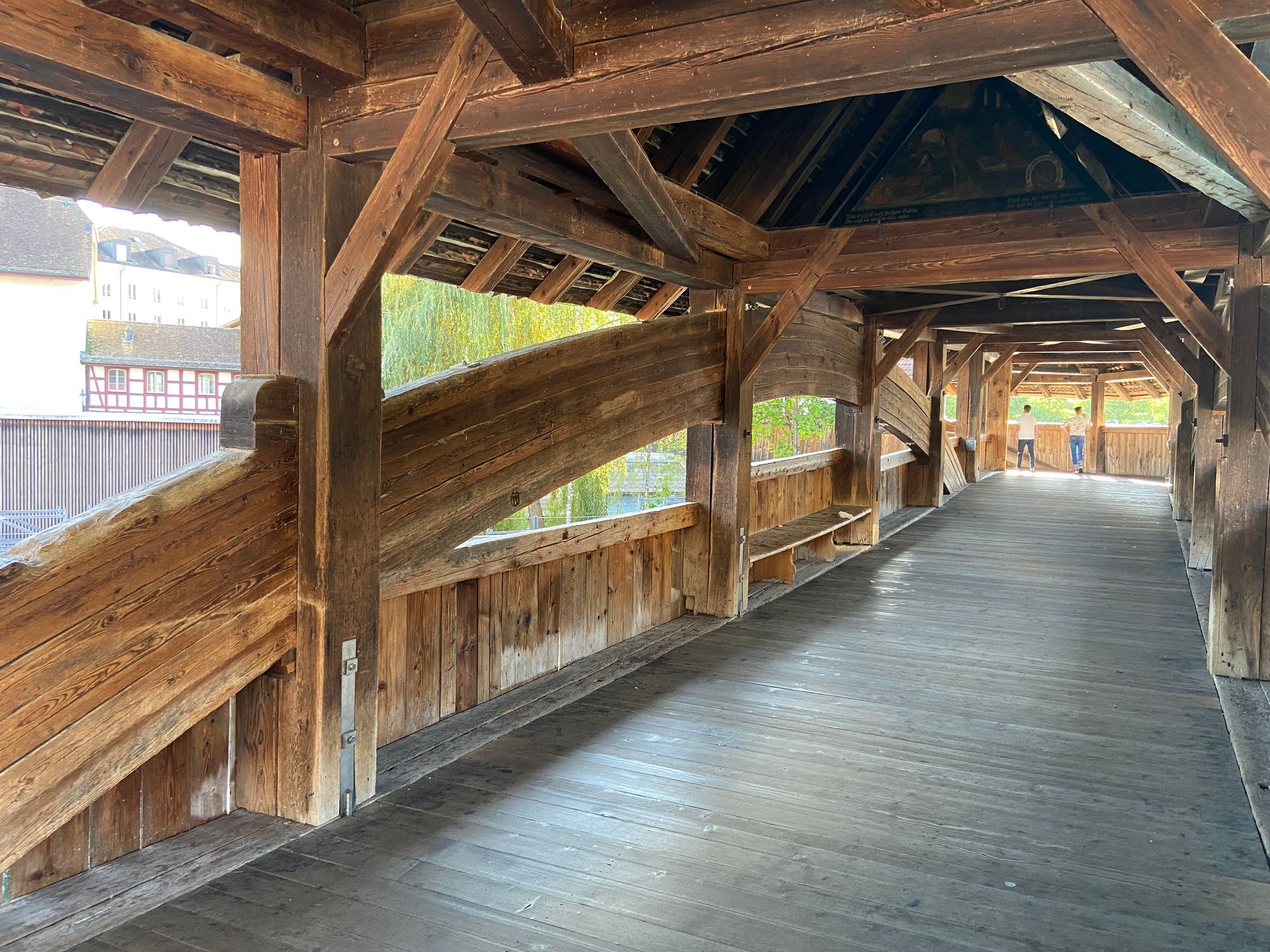
After eating our lunch near the train station, we headed over the Chapel Bridge and into the Altstadt (Old City) neighborhood north of the Reuss. We found Lucerne to be a great city for meandering and so we did just that through the medieval streets of the old city as we headed vaguely in the direction of our next destination.
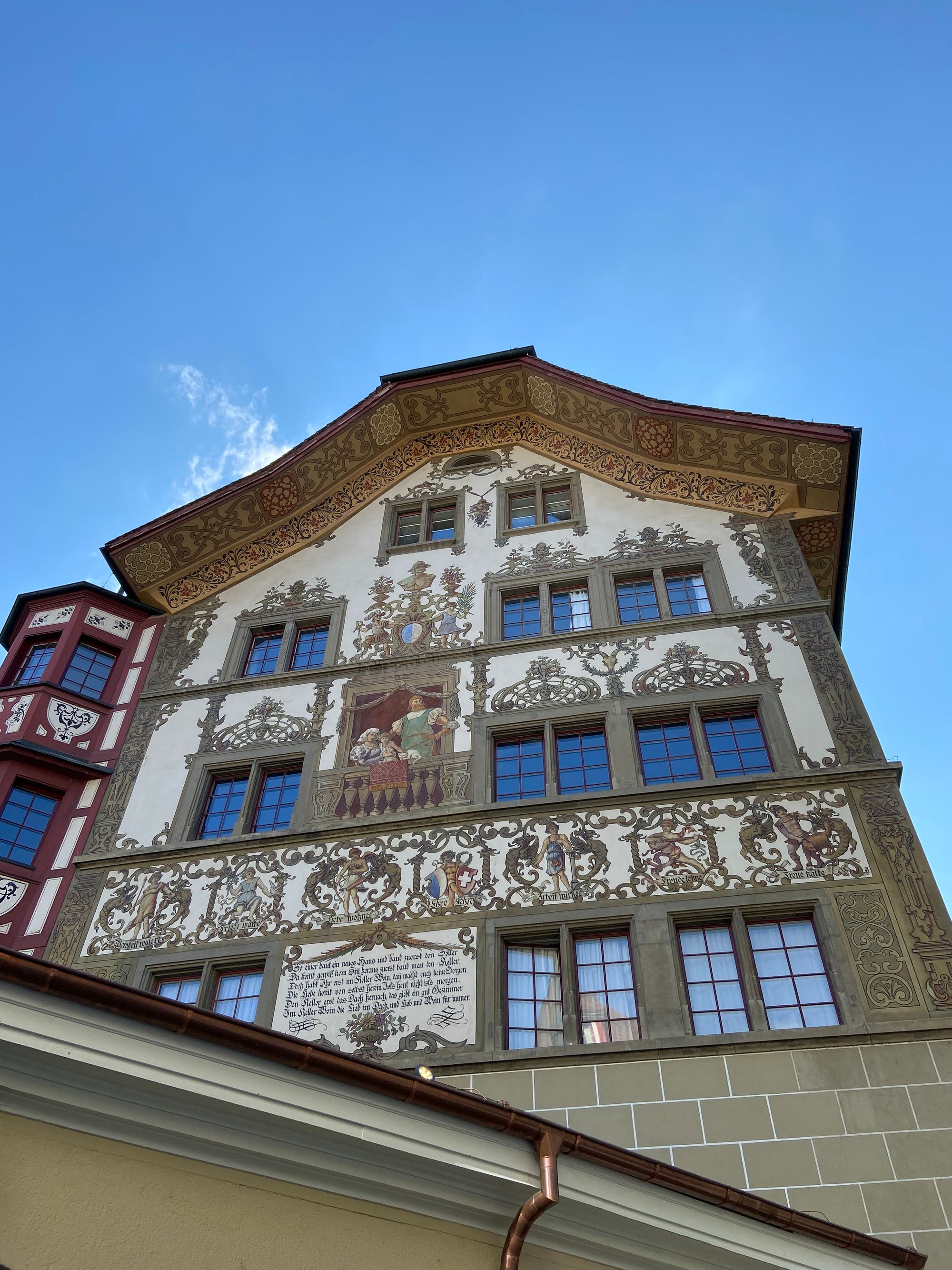
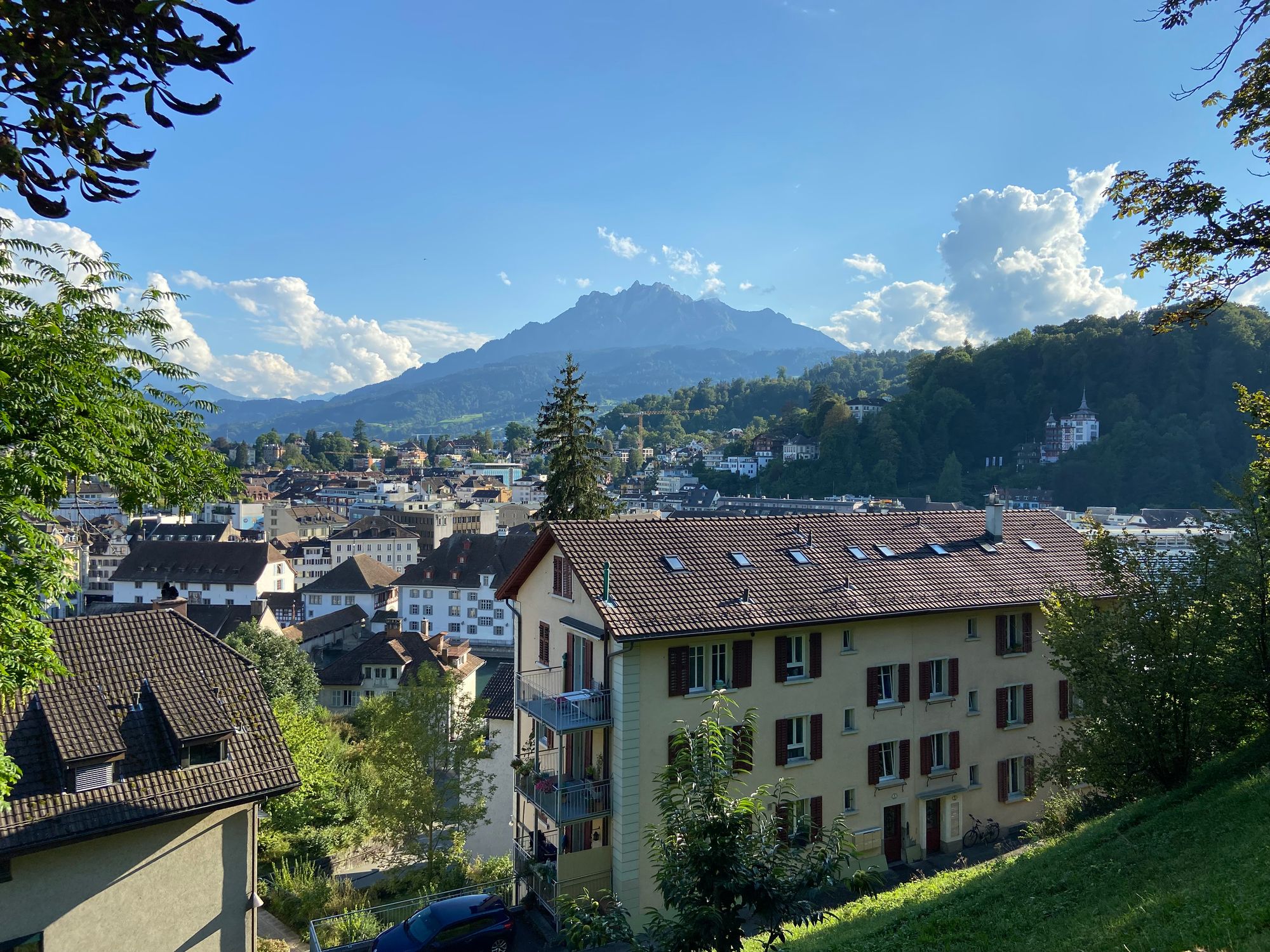
That next destination was another of Lucerne's famous points of interest: the Löwendenkmal (Lion Monument). Carved into a sheer sandstone cliff face within a former quarry in the early 19th century, the monument is a memorial to approximately 760 Swiss Guards who were killed in 1792 while defending Louis XVI and his family during the French Revolution.

The monument sits above a quiet pond which is surrounded by tall trees and lush foliage which creates a tranquil oasis in what is otherwise the middle of a busy city. After enjoying a quiet respite at the monument, we walked along the old city wall until we intersected once again with the Reuss and crossed back to the south bank on another of the medieval wooden bridges, this time the Spreuerbrücke (Spreuer Bridge). A short walk along the river led us back to the train station.
After fetching our bags from the storage locker we checked the departures board and saw there was a train leaving for Zurich in a less than 5 minutes which was great! It became less great when we realized it was leaving from a platform completely on the other side of the station from the storage lockers. We started briskly walking towards the platform and about halfway along we were joined in our quest by a tour group that was clearly trying to make their connection to the same train. What had started as a brisk walk became an all out sprint once the train came into view and clearly was about to leave. One by one about a dozen of us squeezed through the last door on the last carriage of the train, all under the glare of a slightly annoyed conductor. But we made it!
Zurich
Switzerland's largest city, Zurich is a lot like Lucerne (geographically at least), but bigger. Both sit on the end of large glacial lakes and both are bisected by rivers that drain said lakes. We arrived around sunset and found our hotel a few blocks from the enormous Zurich central train station.
After getting settled in, we walked the still lively downtown streets and made our way to Haus Hiltl which bills itself as the oldest continuously operating vegetarian restaurant in the world. It's an interesting concept where they have a huge array of options presented buffet style and you pay (handsomely, but as we found, not out of line with the rest of Zurich) at the end based on the weight of your plate. Everything we had was delicious and it was nice to be able to try a little bit of a whatever we each wanted.
Our original plan was to spend one night in Zurich and leave right after breakfast to continue our journey on to Munich, but having arrived later than we had planned the night before, we decided to spend most of the day in Zurich and catch an evening train instead. The frequency of European train service and flexibility of the Eurail Pass once again made it easy to shift our plans as needed.
Our first stop after breakfast was the Platzspitz park at the confluence of the two rivers that run through central Zurich. The larger Limmat flows directly out of the Zürichsee (Lake Zurich) while the smaller Sihl follows a 45 mile course down from the mountains. The Sihl has a lot more opportunity to pick up sediment along the way which leads to a stark contrast in water color between the two rivers at their convergence as seen below.
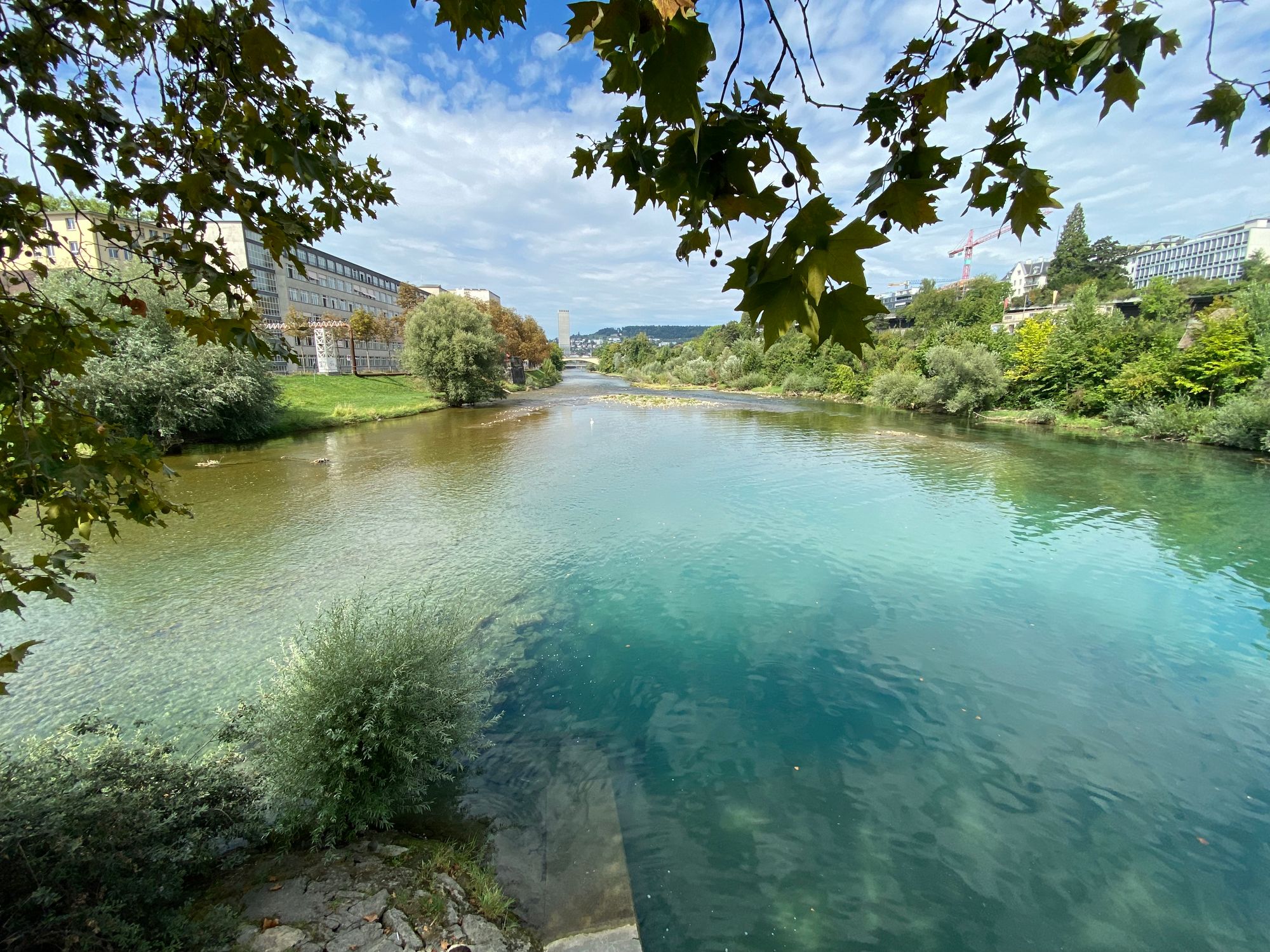
From the Platzspitz park, we made our way east and uphill to the Polyterrasse observation platform. The platform is named for the Eidgenössische Technische Hochschule (ETH) Zurich, a public research university founded in 1854, which is across the street. The university's original name was Eidgenössische Polytechnische Schule (Federal Polytechnic School) which is why some locals still refer to it as "Poly" and why the platform is known as the Polyterrasse (Poly Terrace). Whatever you call it, the platform offers a great view of central Zurich to the west.

From the Polyterrasse, we headed south in the general direction of the Zürichhorn waterfront park, but we had to stop to admire the Romanesque architecture of the 12th century Grossmünster church. A really cool feature here was an architecturally accurate tactile scale model for the visually impaired. The model also let everyone easily study the building from different angles and perspectives. Inclusive design benefits everyone!


From the church we bought transit tickets and caught the tram down to the edge of the Zürichhorn park. In addition to the typical sights and sounds of a popular waterfront park on a beautiful afternoon, we also took in the exterior of the Le Corbusier House, the famed architect's final work which is located on the edge of the park.
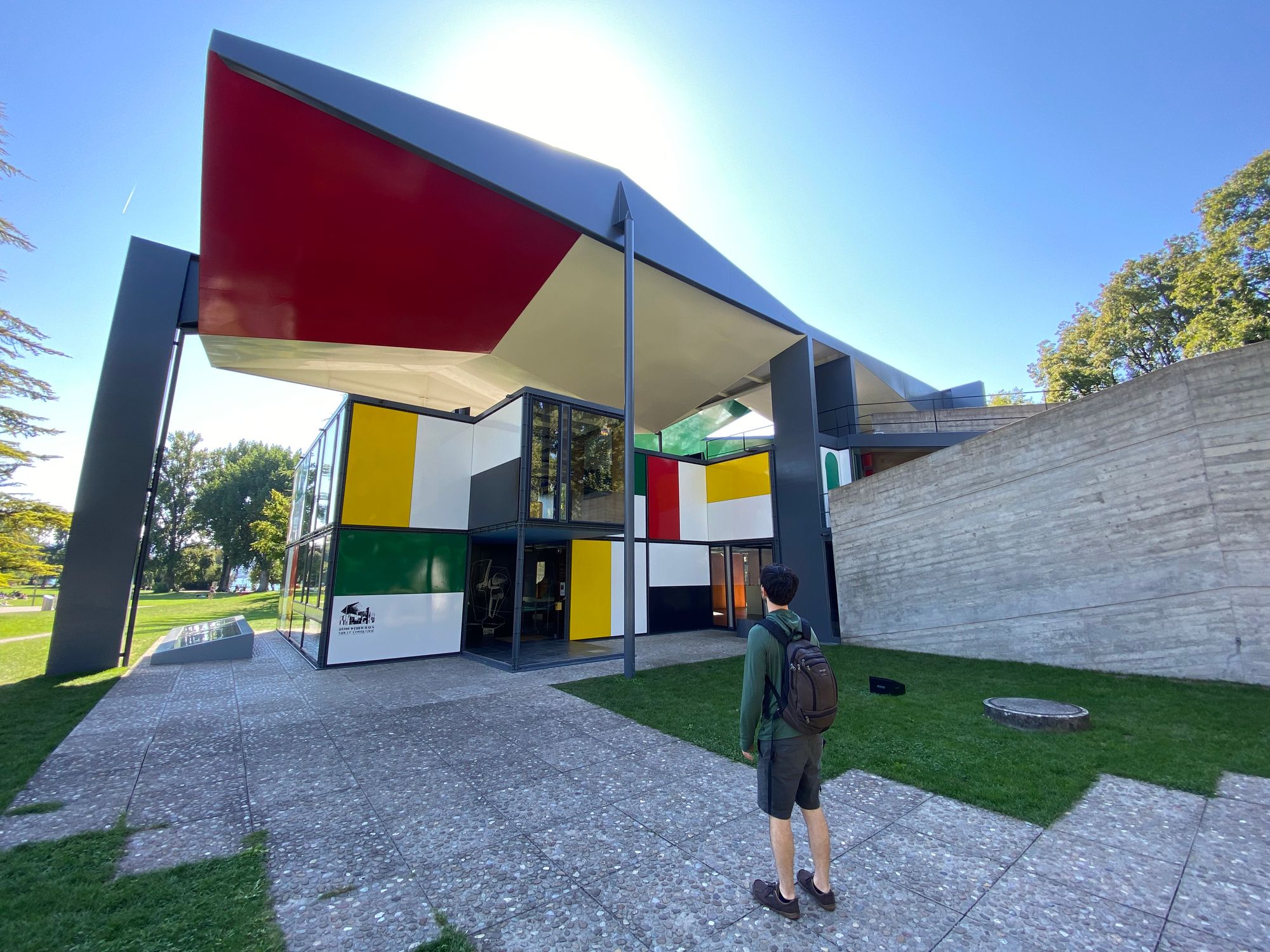
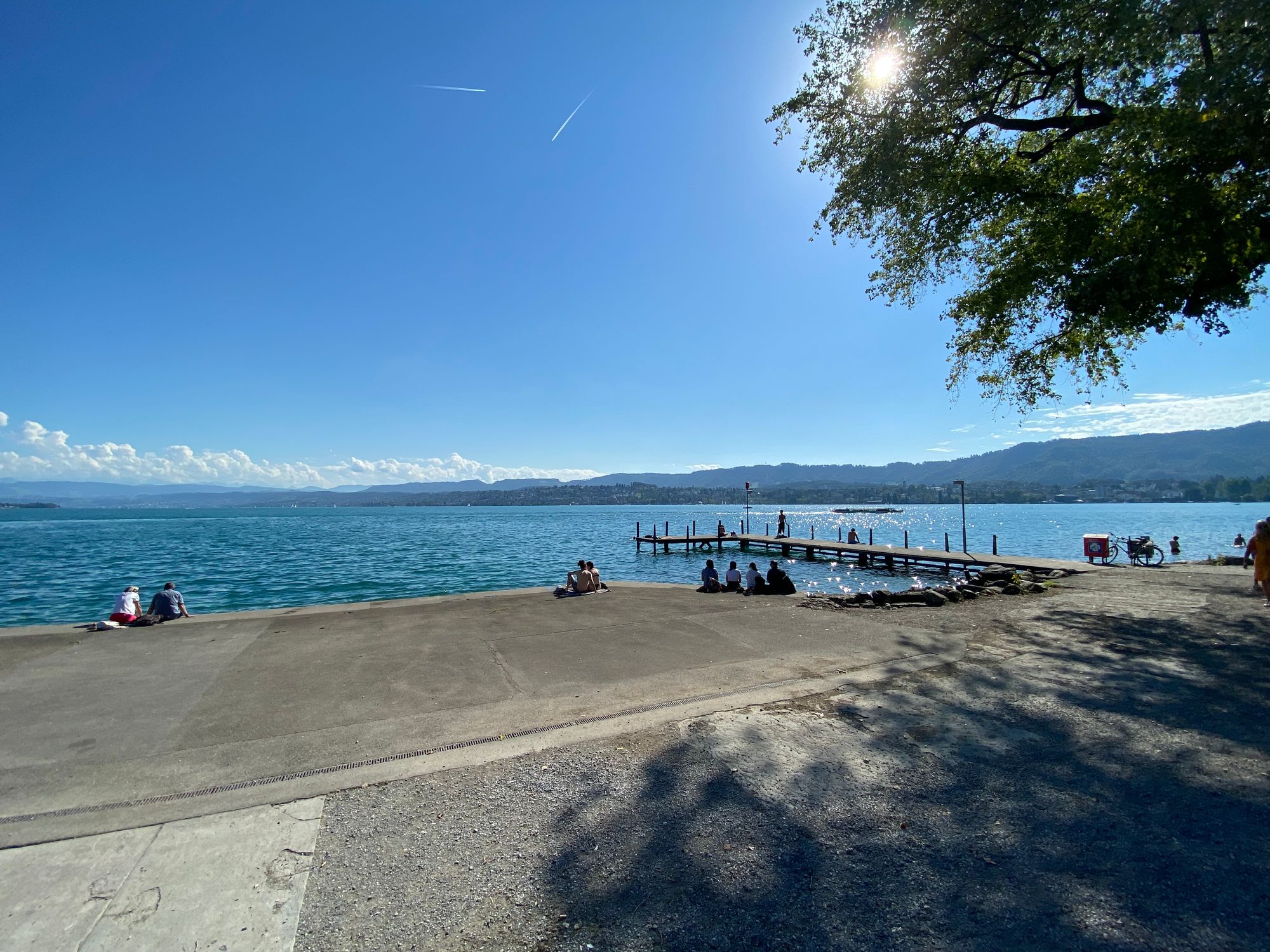
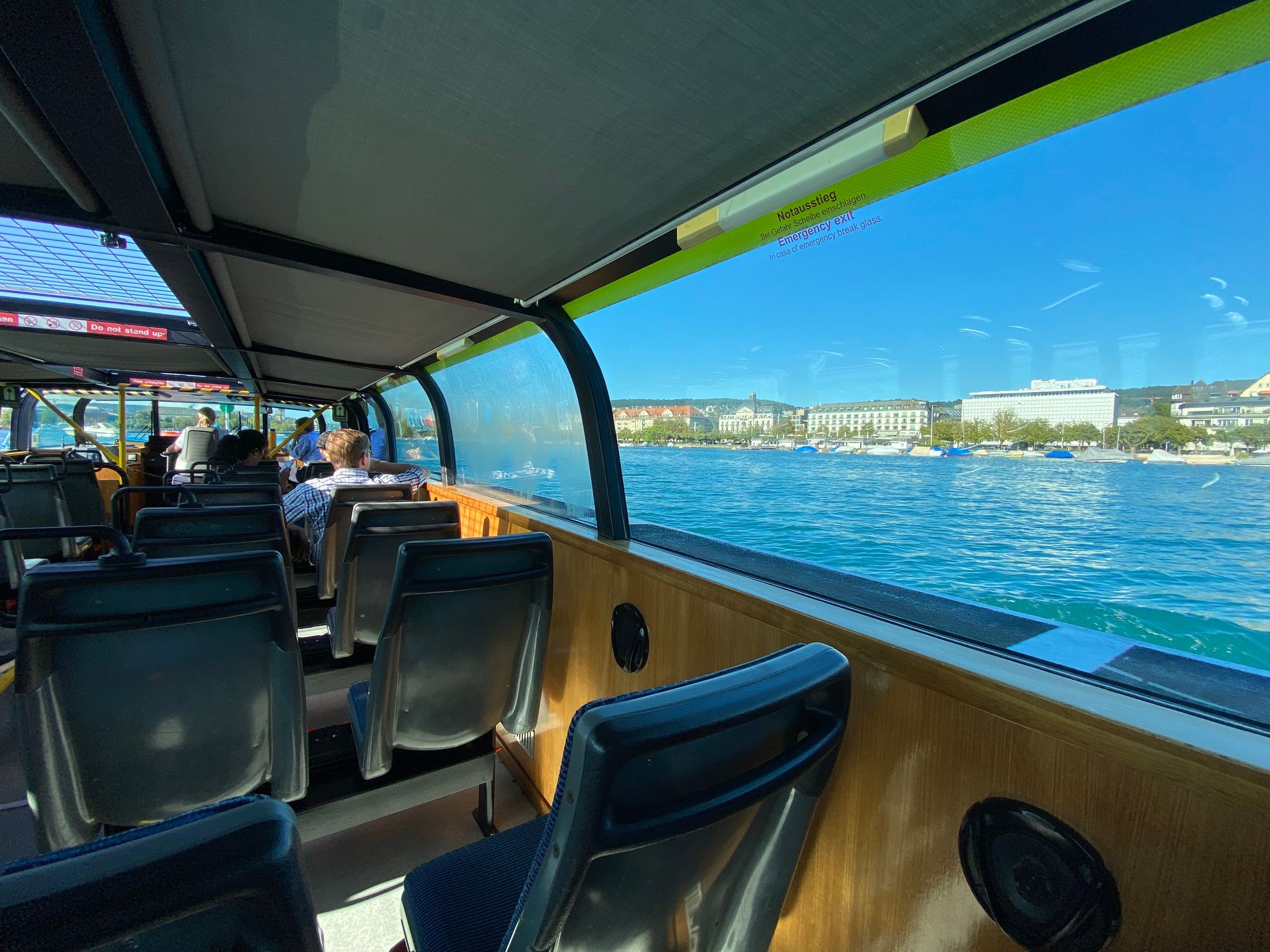
From the Zürichhorn, we were ready to head back into central Zürich and get some early dinner before catching the train to Münich. We were happy to discover that there was a water taxi that ran along the lake from the park back to the city center, and even happier to discover that the tram tickets we had already purchased were valid on the water taxi! The water taxis sit low in the water so they can squeeze under the bridges in the city center which gives a fun and unique perspective as you cruise along.
Since we had enjoyed the quality and variety of our dinner at Haus Hiltl the night before, we decided to try their second location Hiltl Dachterrasse which was just up the street from the train station. This location is on the top floor of a shopping center which meant we had a lovely view over the Bahnhofstrasse below while we ate.
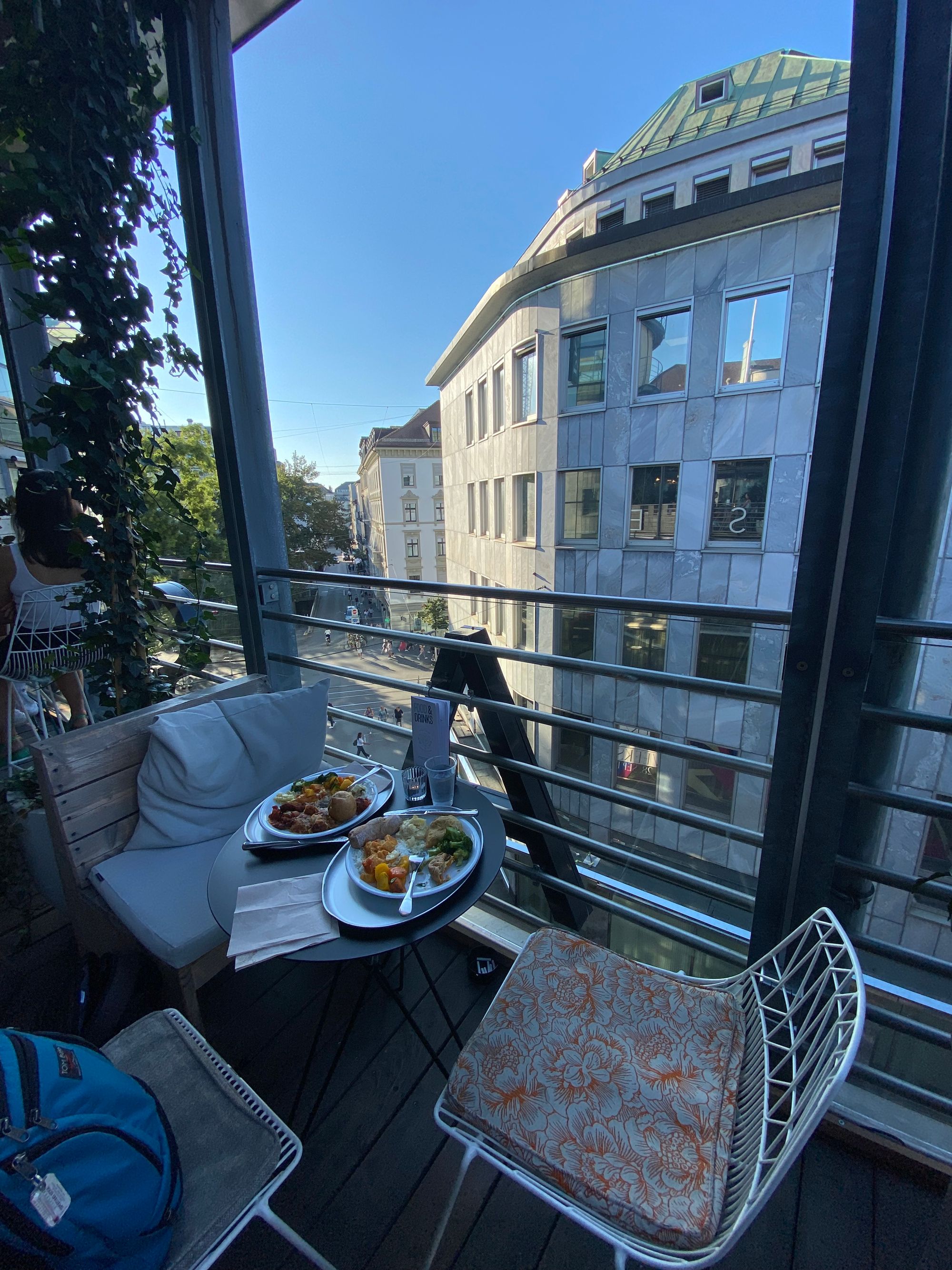
After dinner we grabbed our suitcases from the front desk of our hotel and caught the 7:33 PM train to Münich. Our train departed on time but was delayed in Bregenz, Austria for a little over an hour by a car accident on the tracks just in front of our train. We eventually arrived in Münich after midnight and decided to simplify things and take a taxi to our hotel. After a long day we were both ready for a good night's sleep!
Stay tuned for part 3 where we'll cover our time in Münich and the surrounding area!